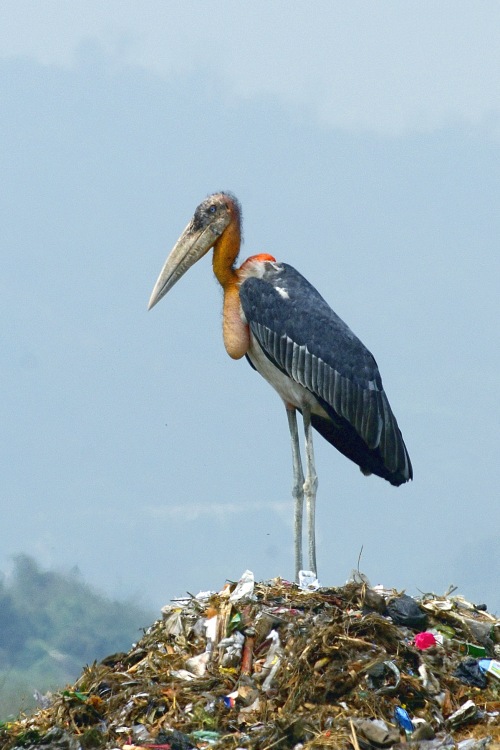Facts About Greater adjutant
The greater adjutant is a notably large stork from the Ciconiidae family, easily recognizable by its massive, wedge-shaped bill, bare head, and distinctive neck pouch. Historically widespread across southern Asia, particularly in India, this species now has only three primary breeding populations remaining, located in India and Cambodia. Known for their scavenging habits, these storks primarily feed on carrion and offal and are distinguished by their unique, "military" gait. Unfortunately, their population has drastically declined, with only about a thousand individuals remaining as of 2008.
These birds are truly enormous, standing 145–150 cm tall with an impressive wingspan of approximately 250 cm. They exhibit several unique behaviors, such as bill-clattering displays and retracting their necks while flying. Greater adjutants often breed in colonies alongside other large waterbirds, such as the spot-billed pelican, constructing their nests high in tall trees. Sadly, they face numerous threats, including habitat loss, pollution, hunting, and egg collection, which have contributed to their endangered status on the IUCN Red List.
Efforts to conserve the greater adjutant include breeding programs, protection of nesting sites, and engaging local communities in conservation initiatives, particularly in Assam, India. These efforts have successfully shifted local perceptions of the storks from being seen as pests to being celebrated as symbols of pride. Through outreach programs, cultural activities, and religious practices, awareness and support for the conservation of the greater adjutant and its habitat have significantly increased.

 Malaysia
Malaysia